Leopard Grouper, Mycteroperca rosacea
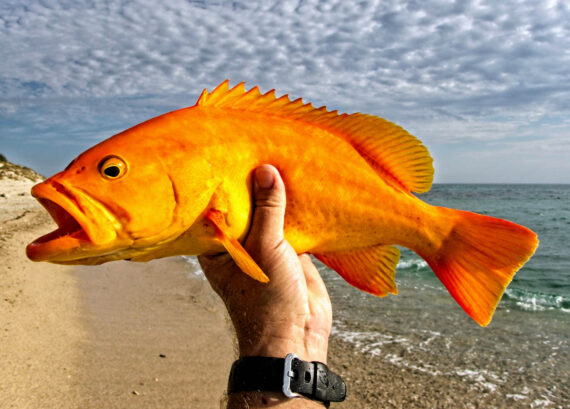 Leopard Grouper, Mycteroperca rosacea, Golden Phase. Fish caught from shore on a fly at Punta Pescadero, Baja California Sur, August 2020. Length: 38 cm (15 inches). Catch and photograph courtesy of Doug Bomeisler, Fort Pierce, Florida.
Leopard Grouper, Mycteroperca rosacea, Golden Phase. Fish caught from shore on a fly at Punta Pescadero, Baja California Sur, August 2020. Length: 38 cm (15 inches). Catch and photograph courtesy of Doug Bomeisler, Fort Pierce, Florida.
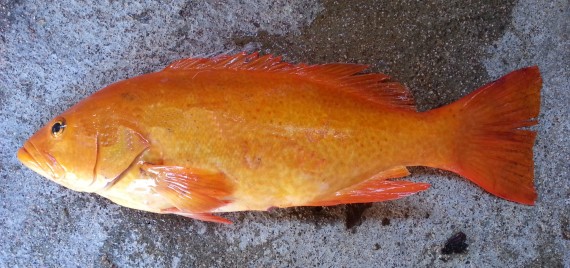 Leopard Grouper, Mycteroperca rosacea, Golden Phase. Fish caught from coastal waters off Loreto, Baja California Sur, April 2015. Length: 41 cm (16 inches). Catch and photograph courtesy of Chris Wheaton, Fullerton, California.
Leopard Grouper, Mycteroperca rosacea, Golden Phase. Fish caught from coastal waters off Loreto, Baja California Sur, April 2015. Length: 41 cm (16 inches). Catch and photograph courtesy of Chris Wheaton, Fullerton, California.
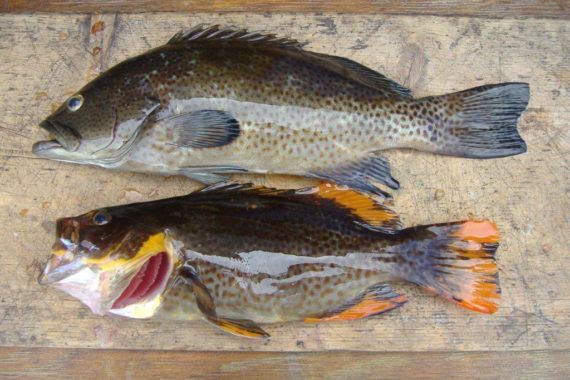 Leopard Grouper, Mycteroperca rosacea, Spotted Phase Transitioning To Golden Phase. Both fish caught in coastal waters off Agua Verde, Baja California Sur, February 2008. Length: 46 cm (18 inches) and 41 cm (16 inches), respectfully. Photograph courtesy of Barry Mastro, Escondido, California.
Leopard Grouper, Mycteroperca rosacea, Spotted Phase Transitioning To Golden Phase. Both fish caught in coastal waters off Agua Verde, Baja California Sur, February 2008. Length: 46 cm (18 inches) and 41 cm (16 inches), respectfully. Photograph courtesy of Barry Mastro, Escondido, California.
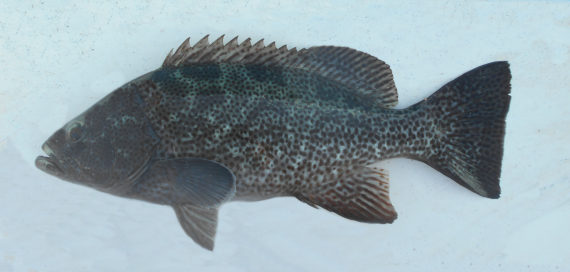 Leopard Grouper, Mycteroperca rosacea, Spotted Phase. Fish caught from coastal waters off Loreto, Baja California Sur, October 2019. Length: 46 cm (18 inches).
Leopard Grouper, Mycteroperca rosacea, Spotted Phase. Fish caught from coastal waters off Loreto, Baja California Sur, October 2019. Length: 46 cm (18 inches).
 Leopard Grouper, Mycteroperca rosacea, Spotted Phase. Fish caught from coastal waters off Loreto, Baja California Sur, April 2016. Length: 48 cm (19 inches).
Leopard Grouper, Mycteroperca rosacea, Spotted Phase. Fish caught from coastal waters off Loreto, Baja California Sur, April 2016. Length: 48 cm (19 inches).
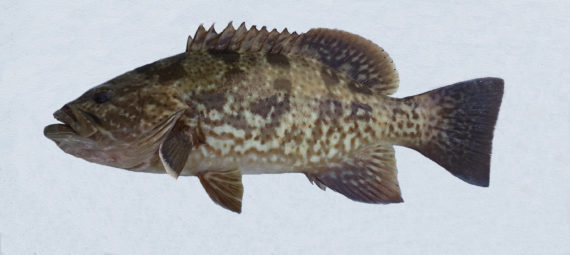 Leopard Grouper, Mycteroperca rosacea, Spotted Phase. Fish caught from coastal waters of Gonzaga Bay, Baja California, June 2016. Length: 40 cm (16 inches). Catch and photograph courtesy of Chris Wheaton, Fullerton, California.
Leopard Grouper, Mycteroperca rosacea, Spotted Phase. Fish caught from coastal waters of Gonzaga Bay, Baja California, June 2016. Length: 40 cm (16 inches). Catch and photograph courtesy of Chris Wheaton, Fullerton, California.
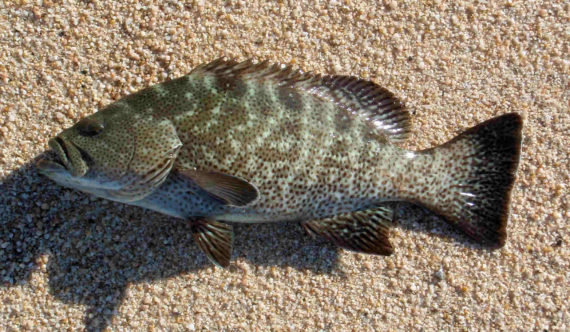 Leopard Grouper, Mycteroperca rosacea, Spotted Phase. Fish caught out of the beach at Km 21, Cabo Real, Baja California Sur, October 2004. Length: 58 cm (23 inches).
Leopard Grouper, Mycteroperca rosacea, Spotted Phase. Fish caught out of the beach at Km 21, Cabo Real, Baja California Sur, October 2004. Length: 58 cm (23 inches).
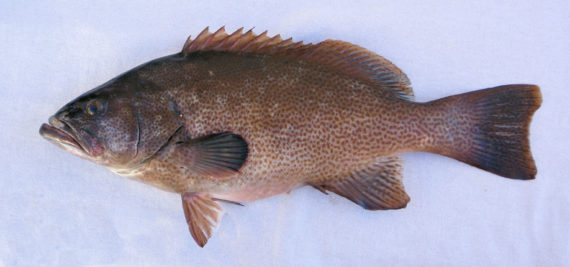 Leopard Grouper, Mycteroperca rosacea, Spotted Phase. Fish caught out from coastal waters off Puerto Los Cabos, Baja California Sur, April 2005. Length: 60 cm (2 feet 0 inches).
Leopard Grouper, Mycteroperca rosacea, Spotted Phase. Fish caught out from coastal waters off Puerto Los Cabos, Baja California Sur, April 2005. Length: 60 cm (2 feet 0 inches).
The Leopard Grouper, Mycteroperca rosacea, is a member of the Grouper or Epinephelidae Family, and is known in Mexico as cabrilla sardinera (or queenie for the golden phase). Globally, there are fifteen species in the genus Mycteroperca, of which eleven are found in Mexican waters, seven in the Atlantic and four in the Pacific Ocean.
The Leopard Grouper has a grouper-like fusiform body. They are dark gray-brown in color, and their heads, bodies, and fins are covered with small red-brown dots and all fins have very narrow white margins. Their anal fin is pointed and their caudal fin has a uniform, non-ragged concave margin. Their mottled background tends to form irregular, interconnected bars on the sides of the body when the fish are alive. Shortly after collection these bars fade away, leaving a field of spots. Approximately 1% of the Leopard Groupers are Golden Phase (“xanthic”) and called Golden Groupers, Queenies, or occasionally Golden Cabrillas; these are easy to identify due to their spectacular, overall yellow or orange color. Queenies are morphologically identical to regularly-colored leopard groupers, and in fact, they all start out with the same drab, brownish skin. But, when they are about 25 cm (10 inches), they become “star-struck” and suddenly change to gold. The condition is something akin to albinism which is “mosaicisum” where individual cells express a different phenotype akin to humans who have patches of skin with no color.
The Leopard Grouper is found in sea mouths and within reefs and rocky areas at depths up to 46 m (150 feet). They reach a maximum length of 1.00 m (3 feet 4 inches) and 15 kg (33 lbs) in weight. As of January 1, 2024, the International Game Fish Association world record stood at 13 kg (28 lbs 10 oz) with the fish caught by the father of my good friend Chris Wheaton from coastal waters off Loreto, Baja California Sur in March 2017. A Grouper Family Weight From Length Conversion Table has been included in this website to allow the accurate determination of a fish weight and a return to the ocean unharmed. Their anal fin has 3 spines and 10 or 11 rays; their caudal fin is emarginate in adults; their first dorsal fin has 11 spines; and, their second dorsal fin has 16 to 18 rays. They are voracious predators, feeding at dawn and dusk on Anchoveta, Cetengraulis mysticetus and Flatiron Herring, Harengula thrissina; juveniles feed on crustaceans and benthic fish. They are probably protogynous with females changing to males at mid-life. Reproduction is gonochoric and aggregate broadcast spawning occurs from April through June. They have a lifespan of at least 17 years.
The Leopard Grouper is a resident of Mexican waters of the Pacific Ocean but has a limited distribution being found from Magdalena Bay, Baja California Sur, southward along the southwest coast of Baja and throughout the Sea of Cortez being more abundant in the central part of the Gulf. They are absent from waters adjacent the coastal mainland south to Guatemala.
The Leopard Grouper can be confused with the Sawtail Grouper, Mycteroperca prionura (tan color covered with brown oval blotches and spots; saw-like caudal fin) and the Goldspotted Sand Bass, Paralabrax auroguttatus (third dorsal spine 3 times longer than second dorsal spine).
From a conservation perspective the Leopard Grouper are currently considered to be VULNERABLE as they are now rare, long-lived, and a large species with slow reproduction cycles and growth rates. They reside in a small geographic range and are targeted by both commercial and recreational fishermen during spawning aggregations in April and May. Populations are believed to have declined by at least 50% over the last 10 years and it is anticipated that this population decline will continue. At present there are three small no-take zones in the Loreto Marine Park, Baja California Sur – Bajo del Murcielago, Bajo del Cochi, and Cabo Pulmo. The Leopard Groupers are one of the most important fish in the Sea of Cortez. They are considered an excellent food fish and are sold commercially at significant levels in the local markets of the greater Los Cabos area, Baja California Sur year-round. In late spring, they are a prime target of the sportfishing industry of the central Sea of Cortez. This species is accessible to surf fishermen on limited occasions in pre-dawn hours.